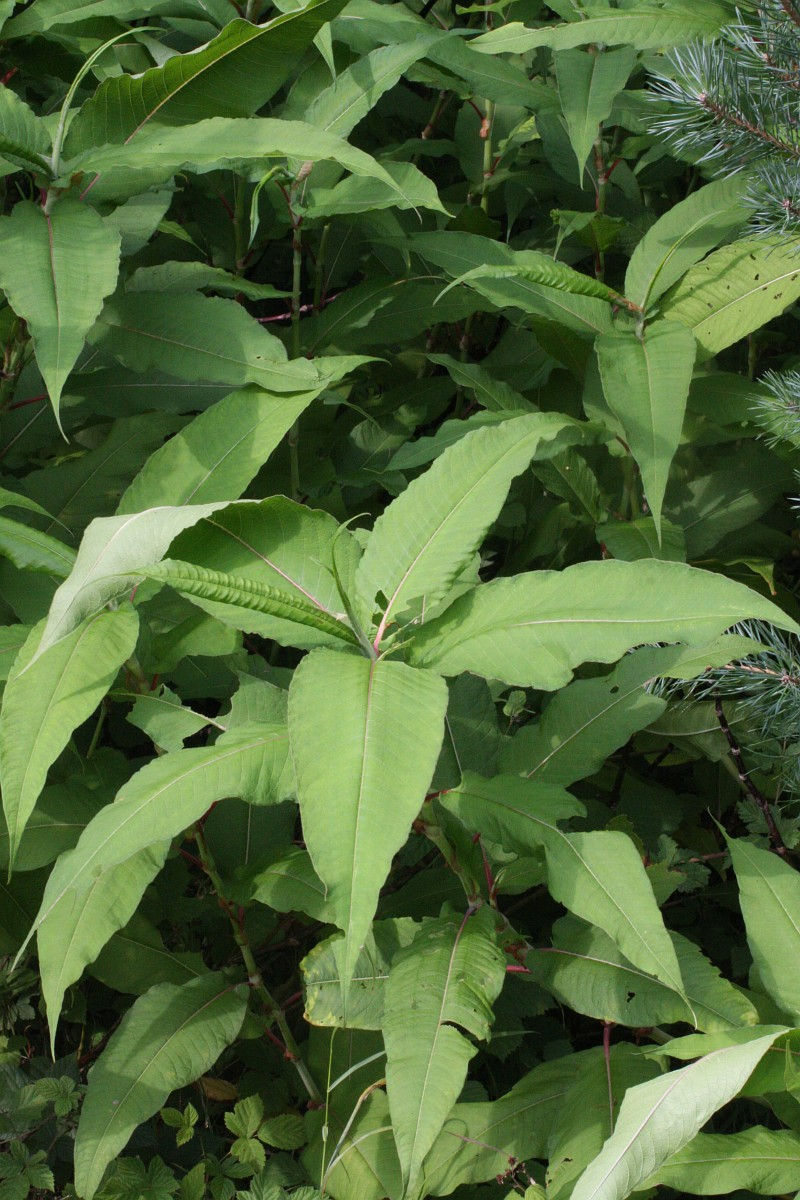

Ireland: Kerry - Dublin - Cork - Waterford - Roscommon - Galway - Belfast
UK: London - Manchester - Newcastle - Cardiff - Liverpool
Himalayan knotweed - Invasive Species Information

What Is Himalayan Knotweed - (Persicaria wallichii)?
Habitat: Terrestrial
Distribution in Ireland: Scattered but locally abundant in many places
Status: Established
Family name: Polygonacea
Reproduction: Spreads by rhizomes and vegetative propagation

Originally introduced as an ornamental garden plant. First recorded in cultivation in 1900 and by 1917 had spread to the wild. Usually found in abandoned gardens and areas where garden waste has been dumped, e.g. roadsides.


Himalayan Knotweed Flowers
Himalayan Knotweed Stem
Himalayan Knotweed Leaf
How To Identify Himalayan Knotweed?
Colour: Large lanceolate type leaf often with a reddish mid-rib
Flower: Small white flower
Stem: Bamboo-like stem with red nodes
Size: Can grow up to 2 metres


Himalayan Knotweed - Persicaria wallichii ID Guide
Himalayan Knotweed Stand
Why Is Himalayan Knotweed A Problem?
Can form dense stands that outcompete native species. Die back in the winter can leave areas vulnerable to erosion.
Displaces native species by forming dense stands up to 2m tall and reducing availability of nutrients in the soil. Can reduce the quality of fish and wildlife habitat in riparian areas.
Cutting of the plant without proper site management could cause the plant to spread further.
European Communities (Birds and Natural Habitats) Regulations 2011 non-native invasive plant species A-Z (Updated 2017)
There are currently 35 invasive plant species listed in the European Communities (Birds and Natural Habitats) Regulations (annex 2, Part 1)...
Click on a species from the following list to find out more regarding non-native species subject to restrictions under Regulations 49 and 50.
Additional Non-Native Plant Species identified as Medium Risk on Ireland's Biodiversity List...
Common name
Barberry
Black currant
Brazilian waterweed
Butterfly-bush
Canadian-fleabane
Clover broomrape
False acacia
Garden lupin
Giant rhubarb
Hairy rocket
Himalayan honeysuckle
Himalayan knotweed
Holm oak
Pampas grass
Pitcherplant
Red oak
Rock cotoneaster
Salmonberry
Sycamore
Three-cornered garlic
Traveler's-joy
Species name
Lysichiton americanus
Antithamnionella ternifolia
Ribes nigrum
Egeria densa
Buddleja davidii
Conyza canadensis
Codium fragile ssp. tomentosoides
Pseudotsuga menziesii
Solidago gigantea
Gunnera manicata
Persicaria wallichii
Lonicera japonica
Euphorbia esula
Acaena ovalifolia
Matteuccia struthiopteris
Sarracenia purpurea
Bunias orientalis
Environment
Terrestrial
Terrestrial
Terrestrial
Marine
Terrestrial
Terrestrial
Freshwater
Terrestrial
Terrestrial
Terrestrial
Terrestrial
Marine
Terrestrial
Terrestrial
Terrestrial
Terrestrial
Terrestrial
Terrestrial
Terrestrial
Terrestrial
Terrestrial
Terrestrial
Terrestrial
Terrestrial
Terrestrial
Terrestrial
Freshwater
Terrestrial
Terrestrial
Terrestrial
Terrestrial
Terrestrial
Terrestrial
Marine
Terrestrial
Terrestrial
Terrestrial
Terrestrial
Terrestrial
Terrestrial
Terrestrial
Terrestrial
Terrestrial
Terrestrial
Terrestrial
Terrestrial
Freshwater
Terrestrial
Risk score
14
15
17
15
14
14
17
17
14
17
16
16
15
14
17
17
17
16
17
14
16
14
14
15
14
16
14
16
14
14
14
14
14
14
14
17
14
14
14
15
15
17
17
14
16
15
14
15